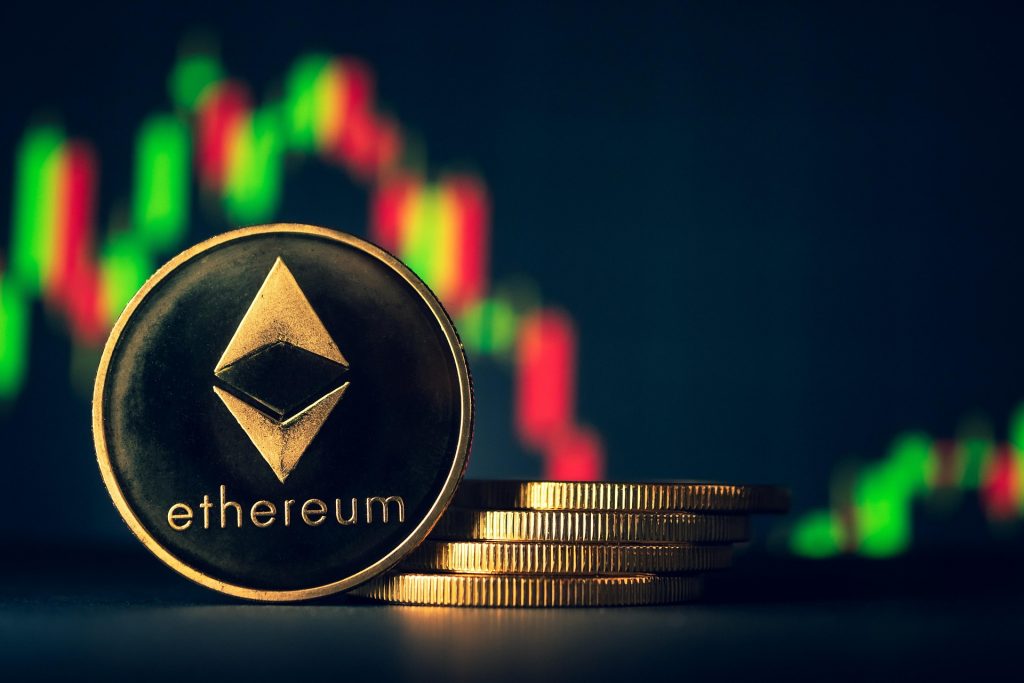Ethereum’s Momentum: Why ETH May Continue Outpacing Bitcoin
October 29, 2025
October 29th, 2025 by
Trefis Team
Ethereum’s stunning 120% surge over the past six months to around $4,000 has dramatically outshined Bitcoin’s modest 20% gain during the same period. This isn’t just a temporary blip—several fundamental factors suggest ETH could maintain its outperformance trajectory.
Before we delve into the details, if you seek an upside with less volatility than holding an individual stock or token like ETH or BTC, consider the High Quality Portfolio. It has comfortably outperformed its benchmark—a combination of the S&P 500, Russell, and S&P MidCap indexes—and has achieved returns exceeding 105% since its inception. Why is that? As a group, HQ Portfolio stocks provided better returns with less risk versus the benchmark index; less of a roller-coaster ride, as evident in HQ Portfolio performance metrics.

Image by A M Hasan Nasim from Pixabay
Why Ethereum Has the Edge
- Institutional Money: Firstly, institutional money is finally taking notice. Spot Ethereum ETFs have seen massive inflows of around $13 billion, demonstrating that traditional finance is embracing ETH beyond just Bitcoin. Major institutions like BlackRock, Fidelity, and JPMorgan are now offering crypto products, and Ethereum’s utility-driven narrative resonates with sophisticated investors who understand its role as the backbone of DeFi and Web3.
- Utility: You may wonder what makes Ethereum different from Bitcoin as an investment. See, while Bitcoin functions primarily as digital gold, Ethereum operates as a programmable platform generating real economic activity. The network processes transactions for everything from DeFi protocols to NFT marketplaces, creating genuine utility that justifies demand. This isn’t just speculation—it’s infrastructure.
- Technical Upgrades: The upcoming Fusaka upgrade in December 2025 promises significant improvements to speed and efficiency, with some analysts projecting ETH could surpass $5,000 following the implementation. The Pectra upgrade has already enhanced validator efficiency and network scalability. These aren’t just theoretical improvements—they’re tangible enhancements that make Ethereum more valuable as a platform. In fact, there is a potential for ETH to cross the $10,000 mark.
- Deflationary Mechanism: Unlike Bitcoin’s fixed supply cap, Ethereum burns transaction fees through EIP-1559, making it deflationary during periods of high network activity. When demand for Ethereum-based applications increases, more ETH gets permanently removed from circulation, creating scarcity. Now, Bitcoin’s scarcity is fixed and guaranteed by its hard cap, whereas Ethereum’s is dynamic and depends on network usage.
- Treasury Accumulation: Large DAOs and institutions are increasingly holding ETH as a treasury asset, reducing circulating supply and creating sustained buying pressure. Digital Asset Treasury companies, including BitMine Immersion Technologies and SharpLink Gaming, now collectively hold about 5% of total ETH in circulation, and ETH’s additional utility provides multiple reasons for institutions to hold beyond just store-of-value. Related – BitMine Immersion’s Path To 2x Growth.
Risks to Consider
- Volatility Concerns: Ethereum exhibits higher volatility than Bitcoin, making it potentially more rewarding but also more punishing during market downturns. Recent October trading shows ETH can swing from $4,700 to $3,800 within weeks, demonstrating the wild price swings investors must stomach. Also, see – How XRP Price Falls To $1?
- Technical Vulnerabilities: Ethereum’s complexity creates additional risk vectors that Bitcoin’s simpler architecture avoids. Smart contract bugs, liquid staking token failures, or validator issues could trigger system-wide problems. The 2016 DAO exploit that led to Ethereum Classic’s creation serves as a reminder that technical failures can have severe consequences.
- ETH Sensitivity: Ethereum shows acute sensitivity to macroeconomic forces and risk appetite changes. Recent ETF outflows of $389 million in a single month (September 2025) demonstrate how quickly institutional sentiment can shift, potentially amplifying downside moves. Bitcoin’s “digital gold” narrative provides more stability during uncertain times. While Bitcoin also saw large outflows in the month of September, the overall price movement was far more favorable than Ethereum.
- Regulatory Uncertainty: Ethereum’s smart contract capabilities and DeFi ecosystem could face more regulatory scrutiny than Bitcoin’s simpler payment system. Changes in how regulators view programmable blockchains could significantly impact ETH’s value proposition.
Investing in a single stock or token without comprehensive analysis can be risky. Consider the Trefis Reinforced Value (RV) Portfolio, which has outperformed its all-cap stocks benchmark (combination of the S&P 500, S&P mid-cap, and Russell 2000 benchmark indices) to produce strong returns for investors. Why is that? The quarterly rebalanced mix of large-, mid-, and small-cap RV Portfolio stocks provided a responsive way to make the most of upbeat market conditions while limiting losses when markets head south, as detailed inRV Portfolio performance metrics.
The Bottom Line
Ethereum’s outperformance reflects genuine fundamental advantages: institutional ETF adoption, upcoming technical upgrades, deflationary tokenomics, and its role as the foundation for the growing DeFi ecosystem. The December Fusaka upgrade and continued institutional accumulation suggest this trend could persist well into 2026. However, investors must weigh ETH’s higher reward potential against its increased volatility and technical complexity.
Invest with Trefis Market-Beating Portfolios
See all Trefis Price Estimates
Related Post




